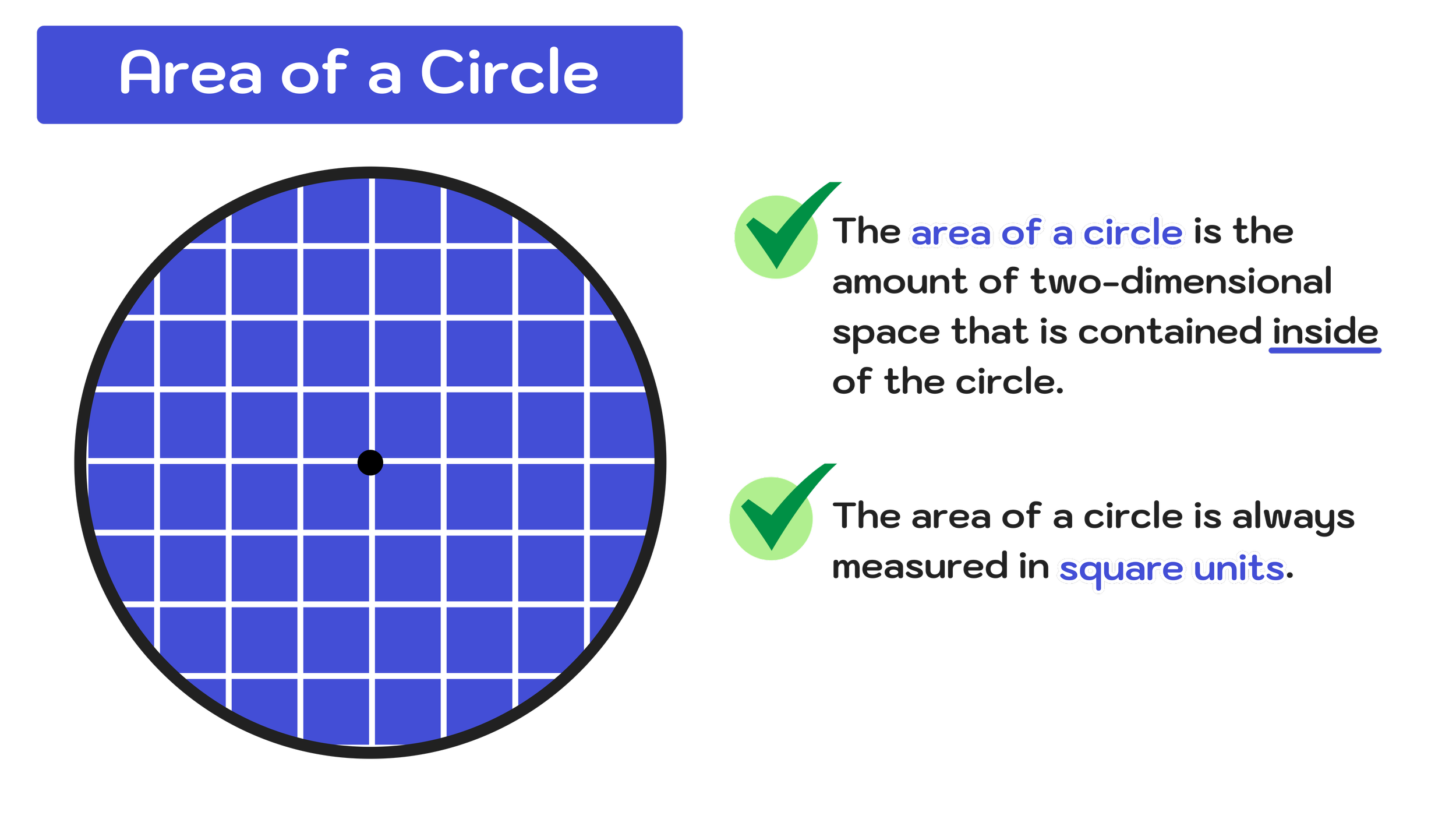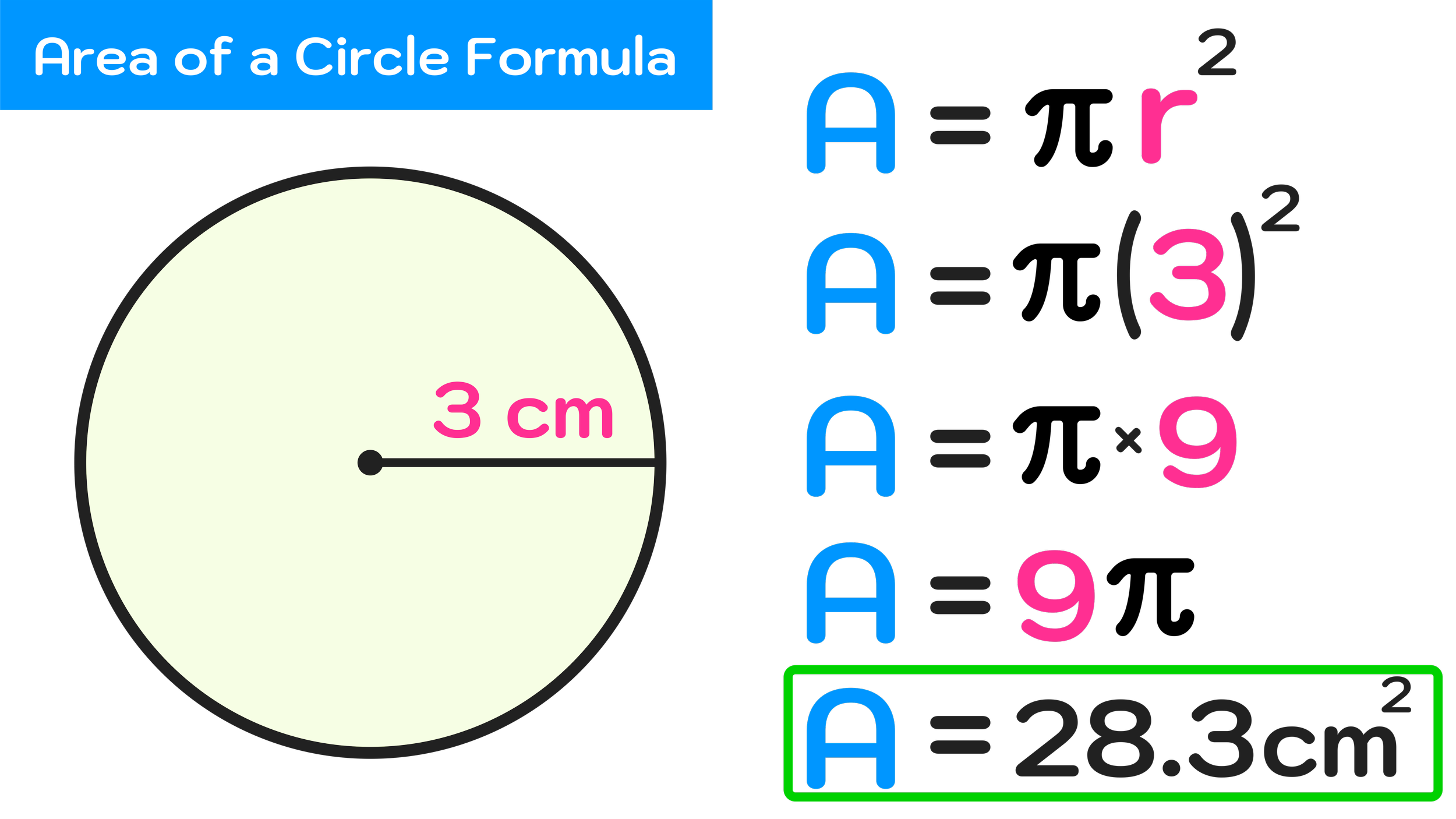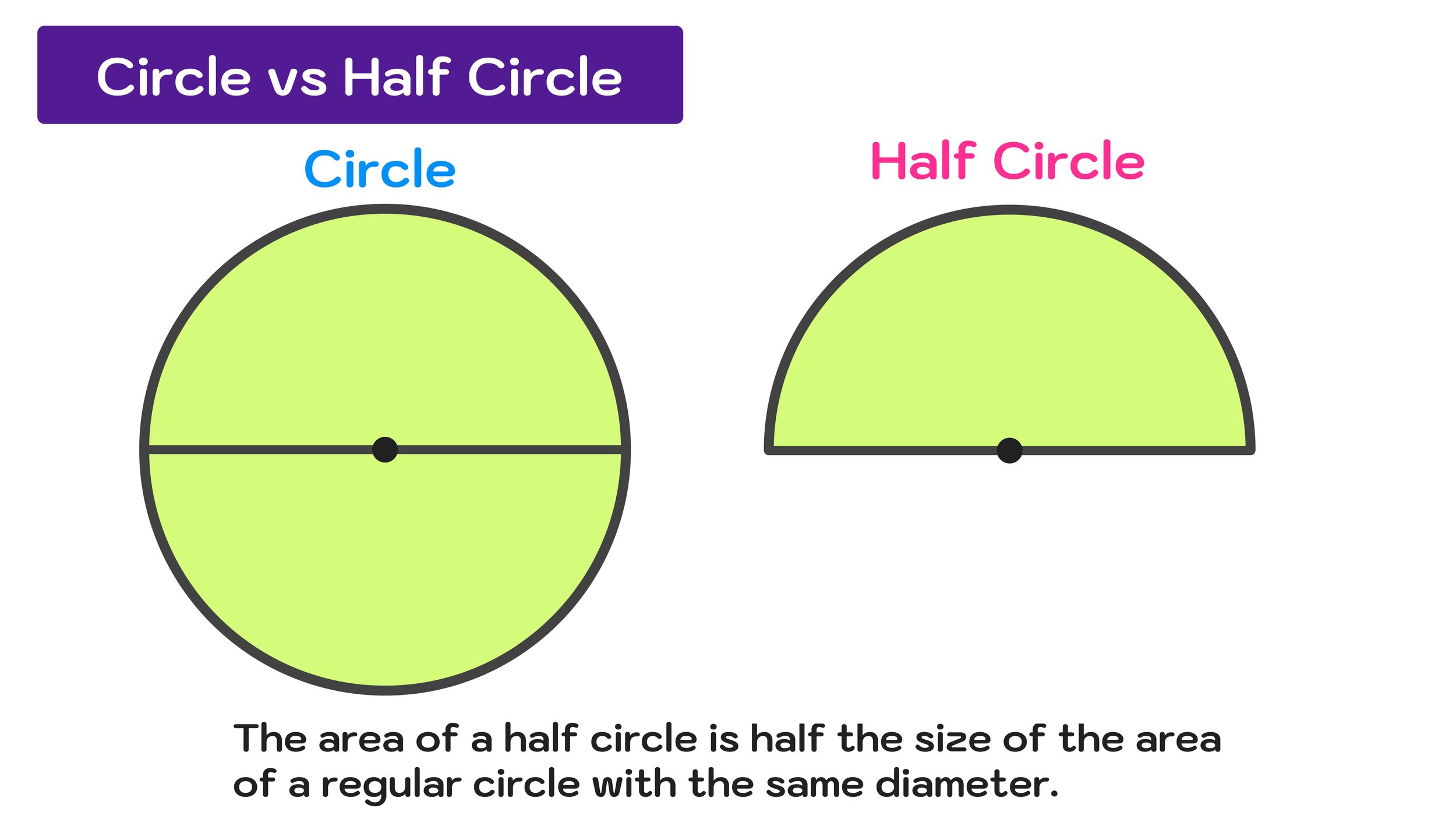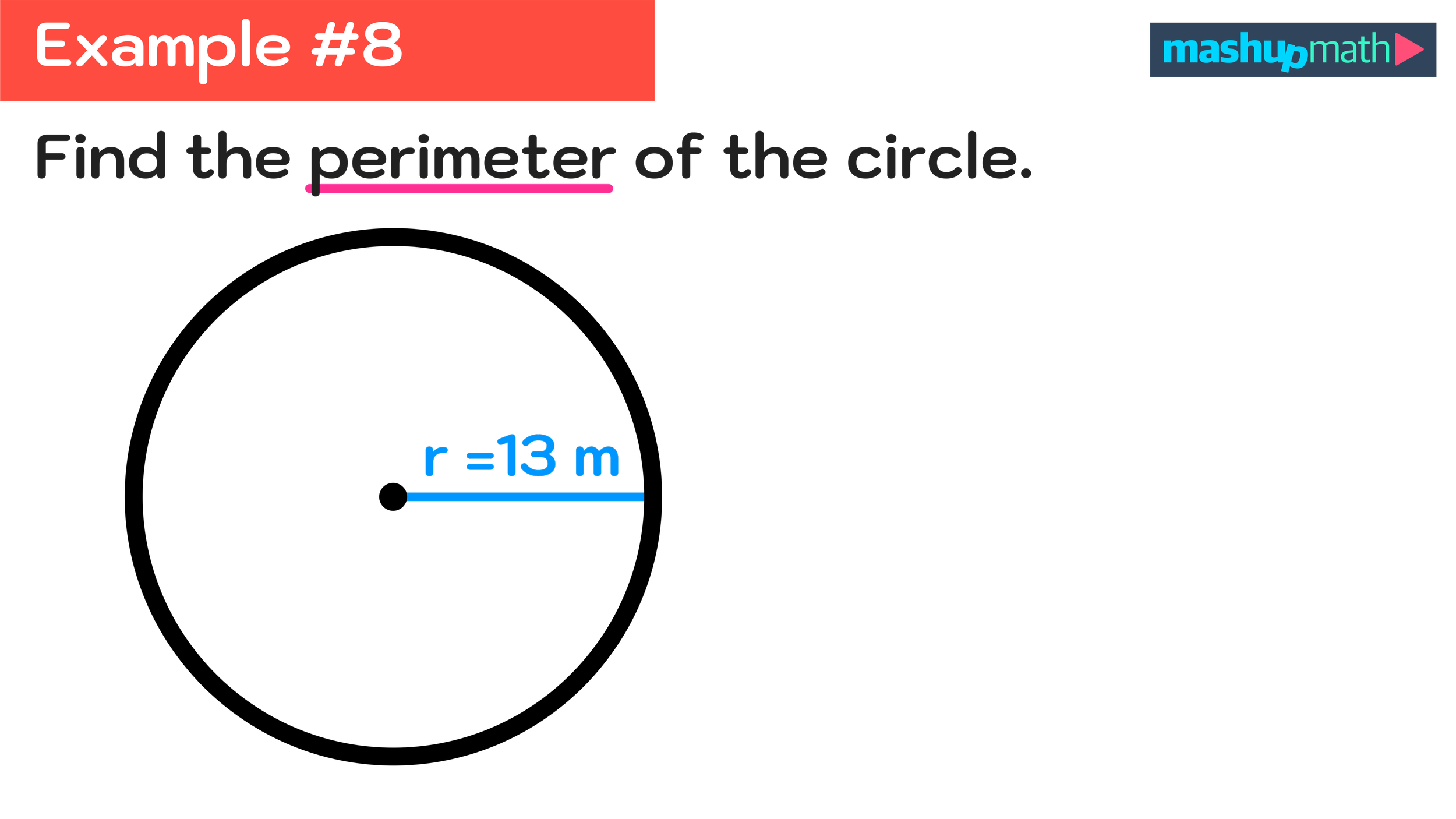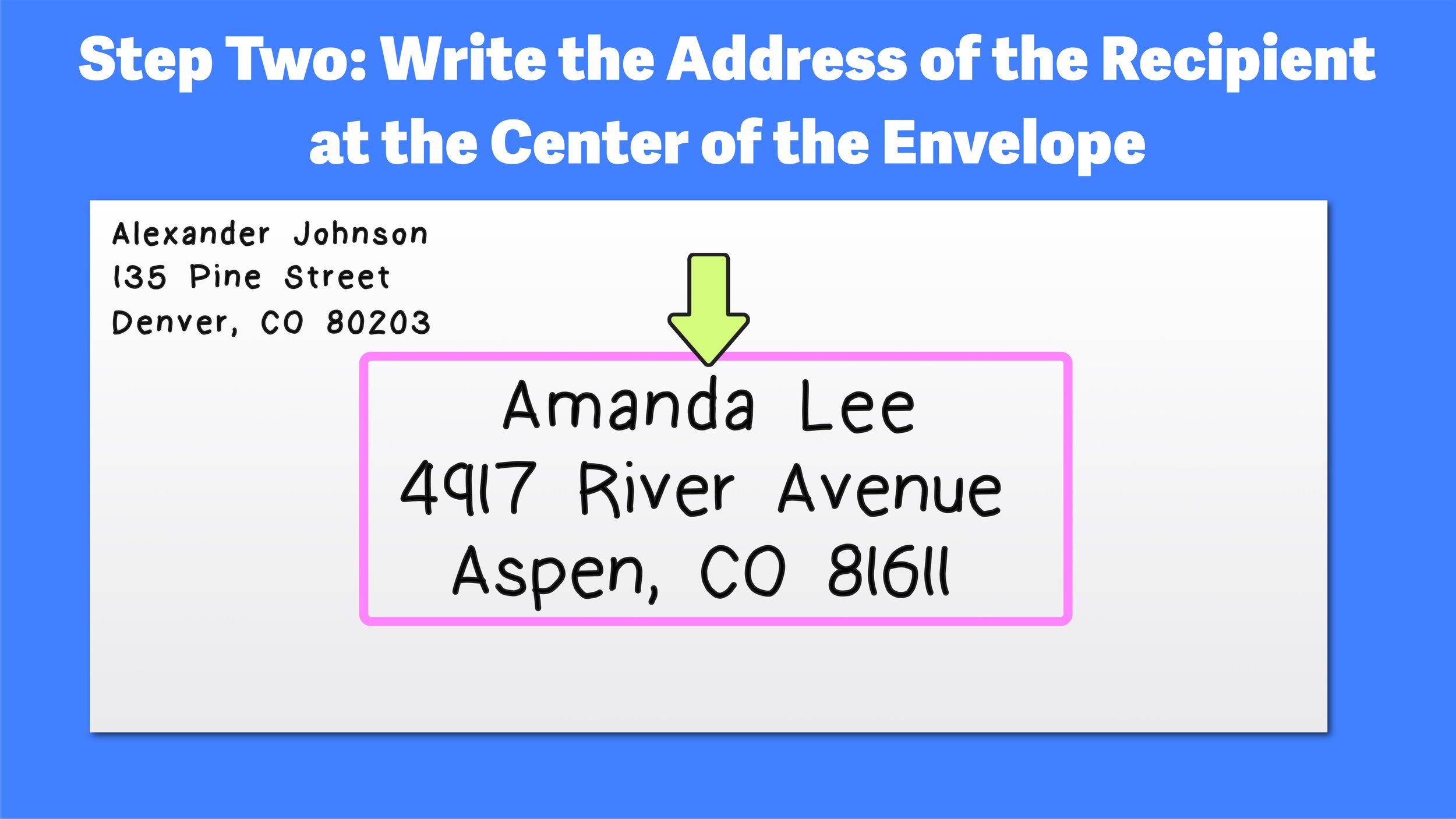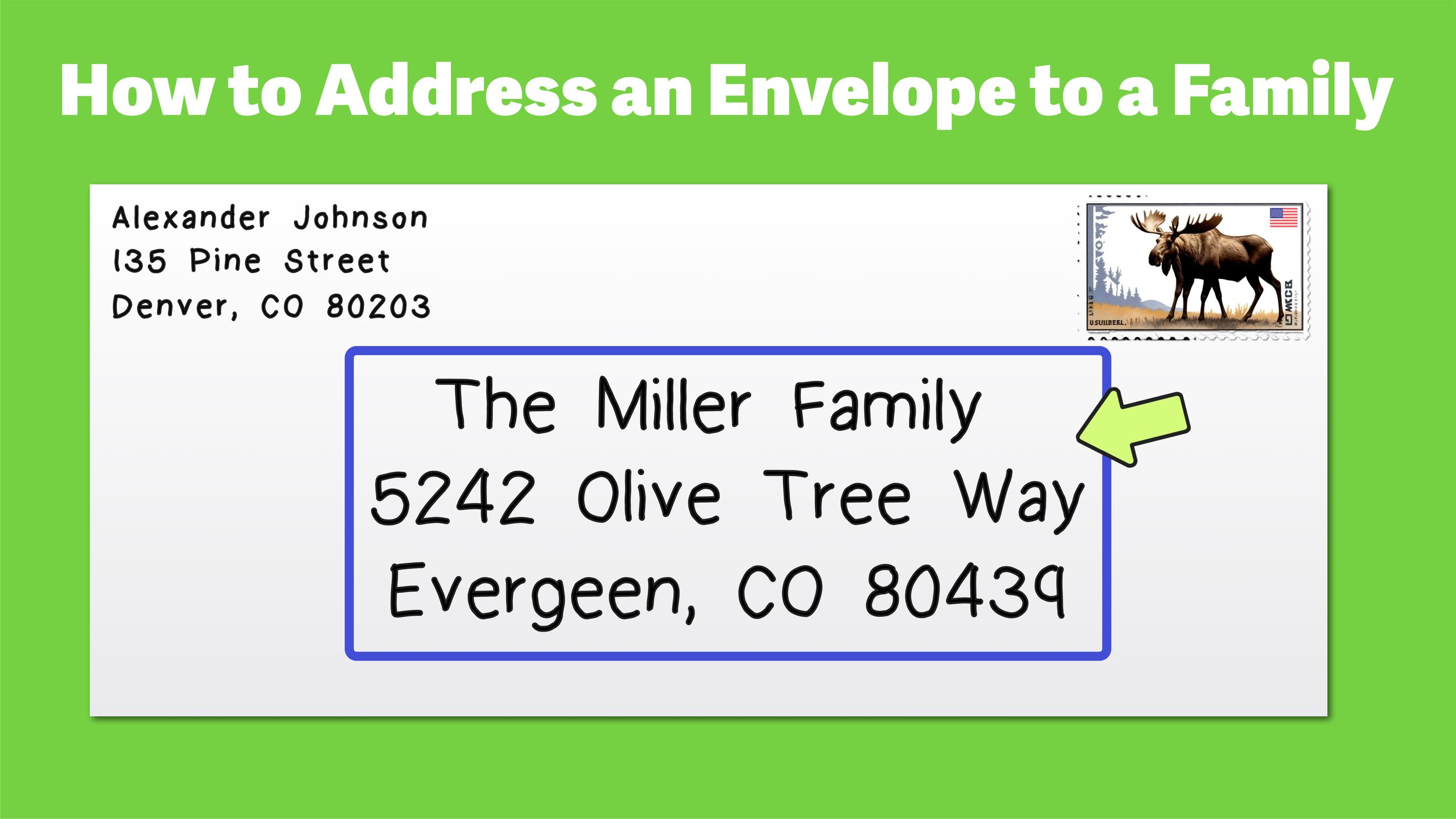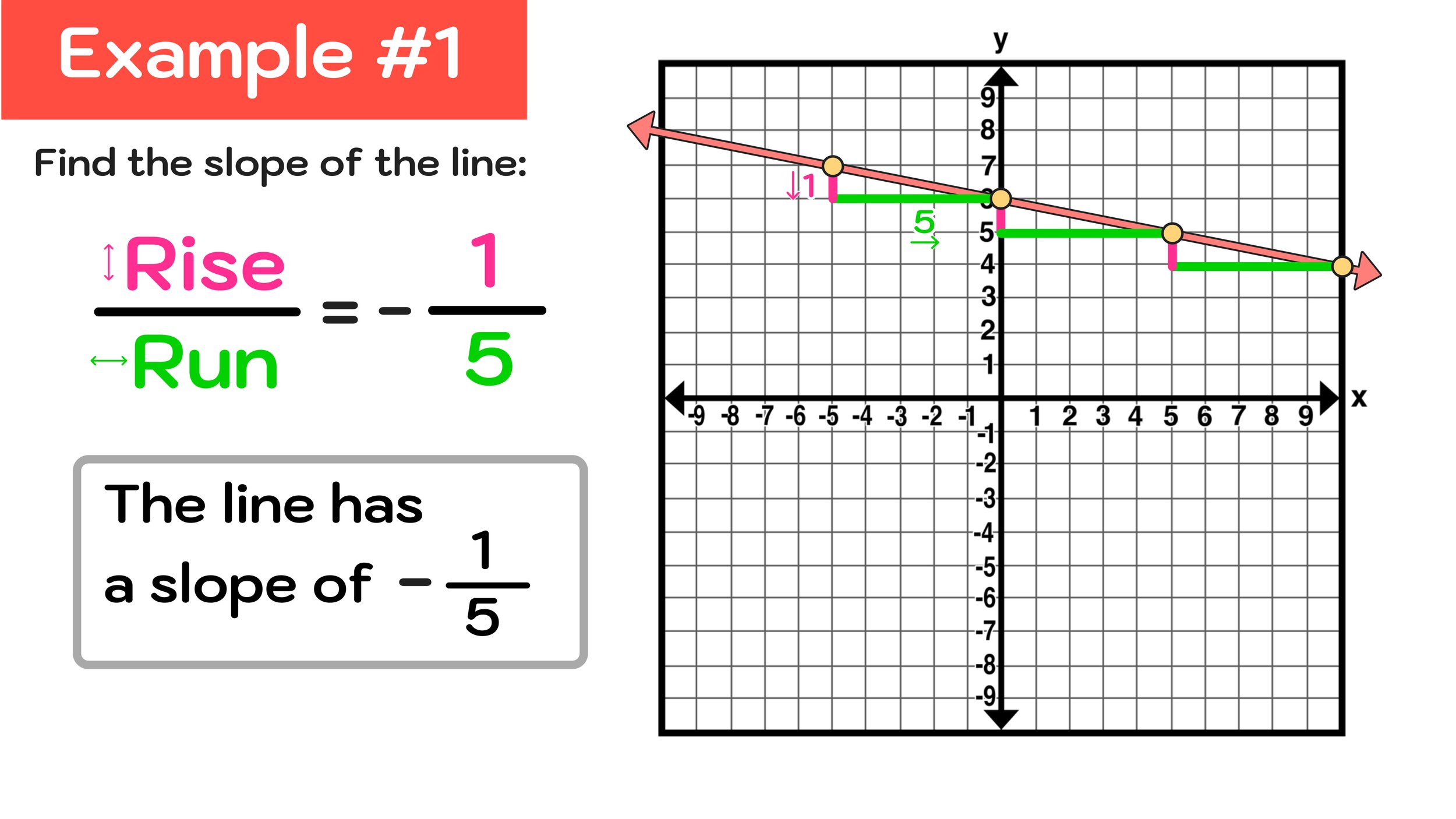How to Find the Area of a Circle
Step-by-Step Guide: How to Find Area of a Circle with Radius, How to Find Area of a Circle with Diameter
In math, it is important to be able to calculate the area of a shape (i.e. the total space that a shape takes up) by using a formula.
When it comes to finding the area of a circle, you can easily find the area as long as you know the area of a circle formula and the length of the circle’s radius or diameter.
This free Step-by-Step Guide on How to Find the Area of a Circle will teach you how to use the circle formula, A=πr², to find area of a circle and it will cover the following topics:
You have the option of either following this guide on how to find area of a circle in step-by-step order, or you can use the hyperlinks above to skip to any particular section of interest.
Now, before we get into any examples of how to find the area of a circle, let’s do a review of important vocabulary terms and characteristics of circles that we can later on apply to solving our sample problems.
Are you ready to get started?
Figure 01: What are the key properties of circles?
What is the Area of a Circle?
In order to understand what the area of a circle actually represents, it’s important that you are familiar with some key properties of circles:
Every circle has a center point.
The circumference of a circle (also known as the edge or perimeter of the circle) is the outer boundary of the circle. All points on the edge of a circle are equidistant from the center point.
The diameter of a circle is a line that passes through the center point and touches two points on the edge of the circle. Any diameter will cut the circle in half.
The radius of a circle is a line segment that starts at the center and ends on the edge of the circle. Any radius will always be equal to half the length of the circle’s diameter.
All of these key properties are highlighted for Circle P in Figure 01 above.
The area of a circle is the amount of two-dimensional space that is contained inside of the circle. Area is measured in square units.
What does this mean in real-world terms? If you wanted to figure out the size of the region contained within a particular circle, you would simply have to calculate its area. For example, if you wanted to tile the bottom of a circular swimming pool, knowing the size of the pool’s area would help you to determine how many square units of tile you would need to cover the entire region.
This real-world example is illustrated in Figure 02 below.
Figure 02: Real-world application of finding the area of a circle. (Image: Mashup Math MJ)
While many math problems involving circles with simply include two-dimensional diagrams of circles, the idea is still the same. The key takeaway here is that the area of a circle is the size of the region encompassed within the circle. The larger the circle, the larger its area will be. And, since circles are two-dimensional figures (i.e. they are flat), the area will be measured in square units.
Figure 03 illustrates this concept and what it means when we say that the area of a circle will always be expressed in square units.
Notice that many of the squares are “cut off” and incomplete, so we should expect to have answers that include decimals rather than whole numbers (we will see this more when we get to the practice problems later on).
For now, just make sure that you are comfortable with the key properties of circles (especially the difference between the radius of a circle and the diameter of a circle) and what the area of a circle represents before moving onto the next section where we will learn the area of a circle formula.
Figure 03: What is the area of a circle?
Area of a Circle Formula: A=πr²
You can find the area of a circle by using the area of a circle formula: A=πr² (where r is the length of the radius of the circle).
Whenever you are calculating a circle’s area using the area of a circle formula, you can use pi (π) or an approximation of pi (π≈3.14).
Before moving forward, make sure that you remember the area of a circle formula and that the r in the formula represents the length of the radius of whatever circle whose area you are trying to find. The diagram in Figure 04 below can serve as a reference for remembering the area of a circle formula. You may also wish to write the formula down before moving onto the practice problems later on in this guide.
Figure 04: The area of a circle formula.
For example, if we wanted to find the area of a circle with a radius of 3 cm, we could use the area of a circle formula to determine the approximate amount of square inches that make up the region inside of the circle.
In this case,
A=πr²
r=3
So, to find the area of this circle, we would simply have to substitute r with 3 and then evaluate to find the area as follows:
A=πr²
A=π(3)²
A=π9 or A=9π
A=28.27433388…
A=28.3 cm²
As shown above, we know that area equals π times 3². Since we know that 3²=9, we can now say that area equals π times 9 (or 9π). Finally, we can put 9π into a calculator to get 28.27433388….
In this guide, we will find area to the nearest tenth of a square unit, so we can approximate our final answer as A=28.3 cm².
These steps are illustrated in Figure 05 below.
Figure 05: How to use the area of a circle formula to find the area of a circle.
Next, let’s move onto working on a few more examples of how to find the area of a circle with a given radius or a given diameter. Then, we will take a look at how to find the area of a half circle.
How to Find Area of a Circle with a Radius
In the example shown in Figure 05 above, we found the area of a circle with a radius of 3cm using the area of a circle formula A=πr².
Whenever you have to find the area of a circle where the radius is given, you can simply input the given value of r (the radius of the circle) into the area of a circle formula and evaluate to find the value of the area.
And we will go ahead and do exactly that in the example below.
Example #1: Find the Area of a Circle with Radius 7 mm
For this example, we have to find the area of a circle with a radius of 7 mm.
We can easily find the area of using the area of a circle formula, A=πr², by substituting r with 7 as follows:
A=πr²
A=π(7)²
A=π49 or A=49π
A=153.93804…
A=153.9 mm²
That’s all that there is to it! Whenever you know the length of the radius of a circle, r, you can input that value into the area of a circle formula to figure out its area.
The steps for solving this first example are illustrated in Figure 06 below. Make sure that you are comfortable with finding the area of a circle with a given radius using the area of a circle formula before moving onto the next section where we will learn how to find area of a circle with diameter.
Figure 06: How to Find the Area of a Circle Step-by-Step
How to Find Area of a Circle with Diameter
While students often have a relatively easy time with finding the area of a circle when they know the value of its radius (as shown in the previous section), they can sometimes get confused when they have to find the area of a circle with diameter given instead of radius.
However, you can still use the area of a circle formula, A=πr², to find the area of a circle with a diameter, but with one small extra step.
Remember that the radius of a circle is a line segment that starts at the center and ends on the edge of the circle and that any radius will always be equal to half the length of the circle’s diameter.
In other words, the diameter of a circle is equal to twice the length of the circle’s radius. Or, vice versa, the radius of a circle is equal to half the length of a circle’s diameter.
So, if you know the diameter of a circle, then you can simply divide it by two to find its radius.
For example, consider a circle with a diameter of 10 feet. This means that the circle has a radius of 5 feet. And, if you know the radius of a circle, then you can use the area of a circle formula to calculate its area.
Let’s go ahead and learn how to find the area of a circle with diameter with this in mind by working through the examples below.
Figure 07: The radius of any circle is equal to one half the length of its diameter.
Example #2: Find the Area of a Circle with Diameter 24 yd
For this example, we have to find the area of a circle with a diameter of 24 yards.
Just like the previous examples, we can use the area of a circle formula, A=πr², to find the area of the circle in question.
However, we can’t use the formula just yet because we only know the length of the diameter and not the radius. So, in order to find the value of the radius, r, we have to first have to divide the diameter by two to find the value of r as follows:
r=d/2
r=24/2
r=12
So, if the circle has a diameter of 24 yards, then it also has a radius of 12 yards (because 24÷2=12).
Now that we know the value of r (r=12 in this case), we can substitute it into the area of a circle formula and solve as follows:
A=πr²
A=π(12)²
A=π144 or A=144π
A=452.3893421…
A=452.4 yd²
And that is how to find area of a circle with diameter!
Just remember that you can always determine the length of a circle’s radius by dividing its diameter by two. And once you know a circle’s radius, you can use the formula A=πr² to find its area.
Figure 08: How to find the area of a circle with diameter by using the area of a circle formula.
Next, let’s look at another example of how to find area of a circle with diameter in a real world context.
Example #3: Find the Area of a Circle with Diameter 57 m.
For this next example, we want to find the area of a circular zen garden with a diameter of 57 meters.
Again, we can solve this problem by using the area of a circle formula A=πr².
Since we know that the circle has a diameter of d=57, we can use that given information to find the length of the radius as follows:
Figure 09: Find the area of a circular zen garden with 57 m diameter.
r=d/2
r=57/2
r=28.5
Remember that we can always find the length of a circle’s radius simply by dividing its diameter by two. In this case, 57/2=28.5 so we can say that r=28.5 (note that it’s totally fine to have a radius that is a decimal value).
So, if the circular zen garden has a diameter of 57 m, then it also has a radius of 28.5 m (because 57÷2=28.5).
Now that we know that r=28.5, we can substitute it into the area of a circle formula and solve as follows:
A=πr²
A=π(28.5)²
A=π812.25 or A=812.25π
A=2,551.758633…
A=2,551.8 m²
We can now conclude that the circular zen garden has an approximate area of 2,551.8 square meters and we have solved the problem!
Figure 10: Real world example of how to find the area of a circle with diameter given.
Now, let’s move onto the final section where we will learn how to find the area of a half circle.
How to Find Area of a Half Circle
Now that you know how to find the area of a circle with a given radius or diameter using the area of a formula circle, you are ready to learn how to find the area of a half circle (also known as a semicircle).
What is a half circle? Simply put, a half circle is a regular circle that has been cut in half along the diameter.
And, notably, the area of a half circle is exactly one half the area of a regular circle with the same diameter.
The differences between a circle and a half circle are illustrated in Figure 11 below.
Figure 11: What is the difference between the area of a circle and the area of a half circle?
With this difference in mind, we will have to use a modified version of the area of a circle formula to find the area of a half circle.
Area of a Circle Formula: A=πr²
Area of a Half Circle Formula: A=(πr²)/2
Notice that the area of a half circle formula is the same as the area of a circle formula except that the result is being dividing by 2. This should make sense because the area of a half circle is half the size of the area of a regular circle with the same diameter.
Figure 12: The area of a half circle formula is A=(πr²)/2
Now that you know the area of a half circle formula, let’s learn how to find the area of a half circle step-by-step.
Example #4: Find the Area of a Half Circle with Diameter 22 cm
For this example, we have to find the area of a half circle with a diameter of 22 cm.
To solve this problem, we can use the area of a half circle formula: A=(πr²)/2
Let’s start by figuring out the value of r (the radius of the half circle), which can determine by cutting the diameter in half as follows:
r=d/2
r=22/2
r=11
Now that we know the value of r (r=11 in this example), we can substitute it into the area of a half circle formula and solve as follows:
A=(πr²)/2
A=(π(11)²)/2
A=(121π)/2
A=190.0663555…
A=190.1 cm²
And that is how to find area of a half circle using the area of a half circle formula.
All of the steps for solving this example are illustrated in Figure 13 below.
Figure 13: How to Find Area of a Half Circle
Example #5: Find the Area of a Half Circle
For this final example, let’s learn how to find the area of a circle (namely a half circle) in a real-world scenario.
In this case, we have a circular shaped table with a surface that is half-covered with tile and half-covered with hardwood and we want to find the area of the portion that is covered in hardwood.
If we know that the table has a diameter of 13 feet, we can find the length of the radius use the area of a half circle formula to solve the problem as follows:
r=d/2
r=13/2
r=6.5
Now that we know that r=6.5, we can substitute it into the area of a half circle formula and solve as follows:
A=(πr²)/2
A=(π(6.5)²)/2
A=(42.25π)/2
A=66.36614481…
A=66.4 ft²
We can now conclude that the hardwood half of the table has an area of 66.4 square feet and we are finished!
Figure 14: How to find the area of a half circle with a diameter of 13 feet.
How to Find the Area of a Circle: Conclusion
Learning how to find the area of a circle or a half circle is an important and useful math skill.
You can find the area of a circle by using the formula A=πr² where r is the length of the circle’s radius.
If you only know the length of a circle’s diameter, you can simply divide it by two (since d=r/2) to find the value of its radius and then use the formula to find the circle’s area.
You can find the area of a half circle by using the formula A=(πr²)/2 where r is the length of the circle’s radius. This formula is derived from the regular area of a circle formula since the area of a half circle is equal to half the area of a regular circle with the same diameter.
Keep Learning:






